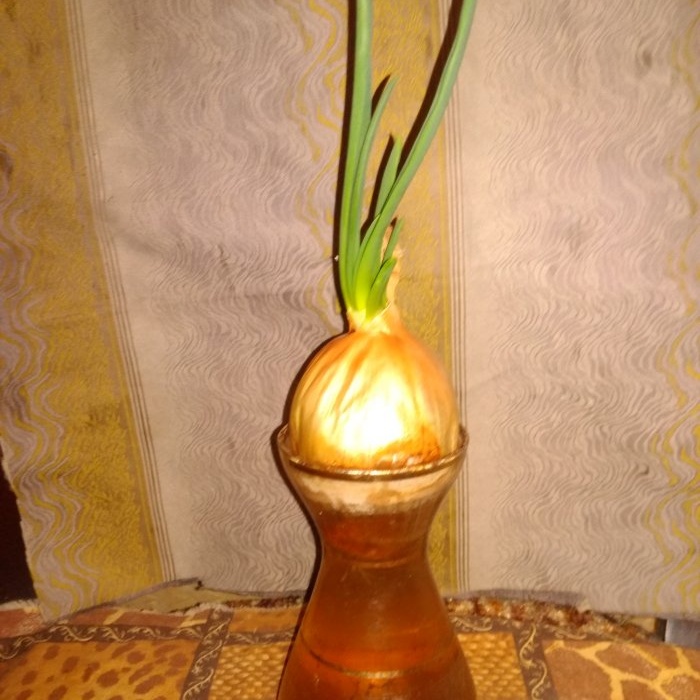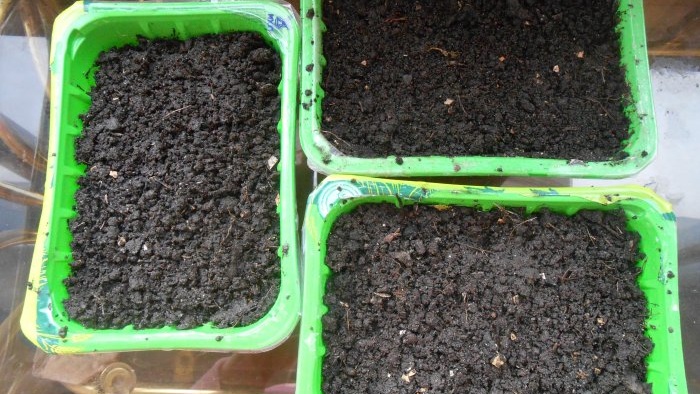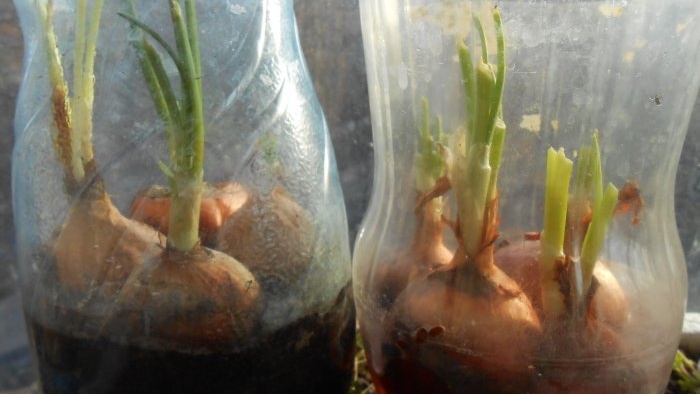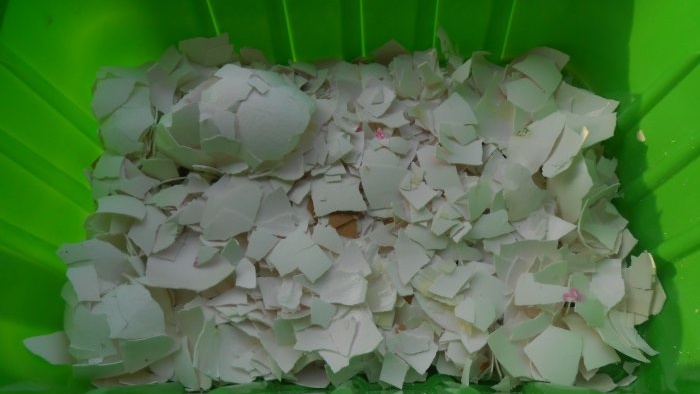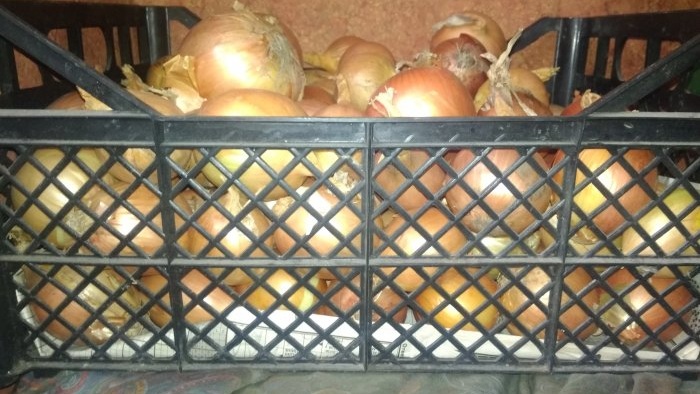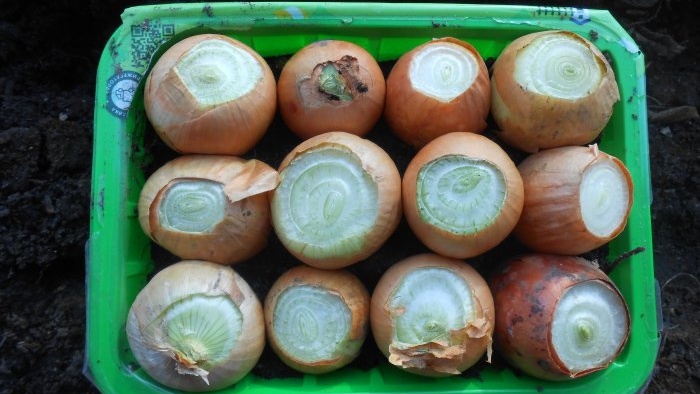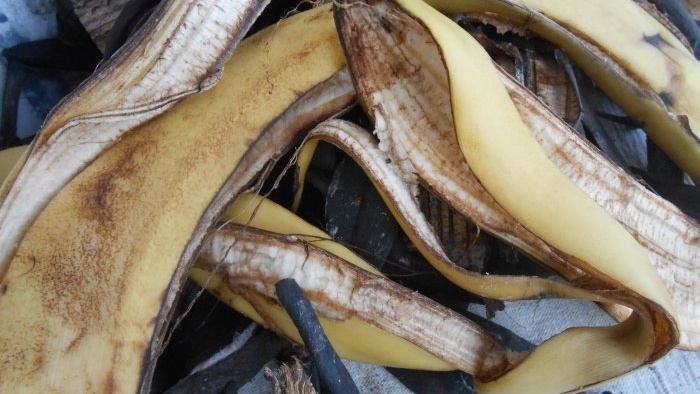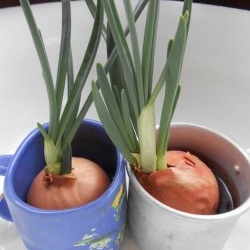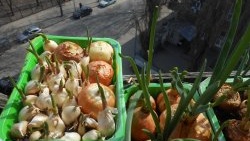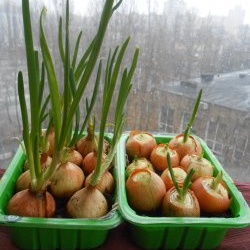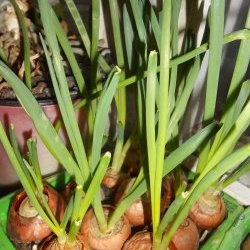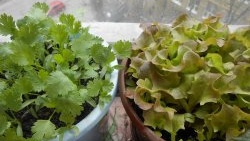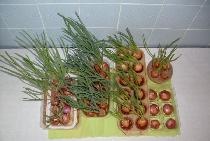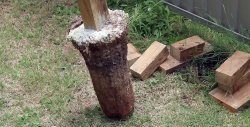Juicy onion feathers with an amazing spring aroma of fresh herbs are indispensable in the winter diet of adults and children. To meet your family’s needs for onion sprouts, it is enough to plant a dozen plants. If you drive onions in water, as most of us do, then cutting the greens can be done only once. Then the bulb begins to rot and the leaves stop growing.
But if you place the sprouted bulbs immediately in fertile soil moistened with melt water (for example, “Universal soil for seedlings of vegetable crops and indoor flowers” with neutral acidity pH 5.5-6.5), then the harvest can be harvested up to 4 times.
Thanks to the organic and mineral substances present in the substrate, the plants will be fully provided with nutrition for several months (up to six months). You only need to water them with settled water at room temperature as the soil dries (2-3 times a week).
The easiest way to grow onions on a windowsill in winter
A detailed process for growing onions with all the secrets and subtleties.
Planting containers
To force onions, you can use any available container, the depth of which exceeds 12 cm, for example, plastic containers in which portioned pieces of poultry and meat are sold, and even cut plastic bottles.
It is better to fill the bottom of the container with drainage. A centimeter layer of crushed eggshells, coarse river sand or brick chips will prevent stagnation of moisture and rotting of the underground part of the plants.
Planting material
For planting, it is better to select already sprouted bulbs. Ideally, they should have both stems and white living roots. It is this type of planting material that takes root in a matter of days and produces tall, succulent shoots within 2 weeks. When buying onions in a supermarket or bazaar, put the sprouted onions in a separate bag so you can immediately plant them on the feathers.
Also, sprouted onions are available in abundance among gardeners who grow this crop and store the harvest for long-term preservation. Even when creating ideal cold storage conditions (temperature +2°C, humidity 75-80%, constant ventilation), some of the bulbs still awaken in winter and spring.
They are selected during a weekly inspection of vegetables in the cellar or underground to be immediately used for food or for planting. And when storing onions in an apartment, the number of awakened heads increases significantly. According to reviews from experienced owners, in one standard box made of perforated plastic, from 2 to 10 bulbs hatch in a week. They are immediately set aside for distillation.
If you decide to germinate turnips that have not awakened, the roots of which are dry, as is the root collar, then it is recommended to cut off the upper part of each bulb by a few millimeters with a sharply sharpened knife. This technique will allow sprouts to appear several days, or even weeks earlier.
However, as practice shows, you should not count on cutting greenery from such heads earlier than 6-8 weeks from the moment of planting. Onions take a particularly long time to awaken during the dormant period - from October to February. With the arrival of spring, the plant’s biological clock starts awakening mechanisms on its own, and the onion produces feathers much faster, regardless of whether you cut off the tops or left them in their original form.
Organization of watering and fertilizing onions on the windowsill
Green onions, like all indoor plants, should be watered with soft water without chlorine. In winter, it is recommended to use melted snow and ice for watering, which is collected on your balcony or near the house. According to experts, it is this water that has a beneficial effect on onions, making their stems stronger and greener.
To increase the yield of green onions, many gardeners regularly feed plants planted in fertile substrate. For fertilizer, self-prepared infusions and solutions from natural products are used: fruit peelings, wood ash, baker's yeast.
Onions respond well to the following liquid fertilizers:
- infusion of banana, apple and citrus peels (peeling 3-4 fruits per 1 liter of water, leave for 4 days at room temperature);- baker's yeast solution (10 g of fresh compressed yeast and 1 tsp of sugar per 1 liter of water, leave for 4 hours in a warm place);
- ash infusion (2 tbsp.sifted grass ash per 1 liter of water, leave for 5 days, shake the sediment once a day).
With homemade fertilizers, the onions are watered every 10-11 days, starting from the second week after planting the heads in the soil.
But mineral fertilizers, especially nitrogen fertilizers (ammonium nitrate, urea, ammonium sulfate, calcium nitrate, nitroammophosphate, etc.), are not used to feed leafy greens, since additional portions of nitrogen supplied with root dressings are converted into nitrates and accumulate in leaves of plants.
Make sure that excess liquid does not accumulate in the planting container. Bulbs with an abundance of moisture begin to rot, despite the presence of a drainage layer. Water the plants moderately and only after the soil has dried well after the previous watering. And you should not apply liquid fertilizer if the soil is waterlogged.
Lighting
To force green onions, you do not need to install additional lighting sources. The light coming through the windows is enough for them. However, as experience shows, plants develop many times more intensely in the presence of lighting. In spring, containers with onions can be taken out onto a glassed-in balcony. Seedlings can easily tolerate short-term temperature drops down to –2°C. But the sun's rays accelerate the growth of green mass several times.
Harvest
The first cutting of feathers is carried out when their height exceeds 15 cm. To preserve vitamins, greens are immediately added to food. Finely chopped green onions are an ideal addition to any salads, soups and cabbage soup. Onion shoots, like other leafy vegetables, are traditionally served with fried meat and used to decorate hot dishes and cold appetizers.
Try growing onions in the ground on a windowsill, and you will be pleasantly surprised by the results of the effort!


